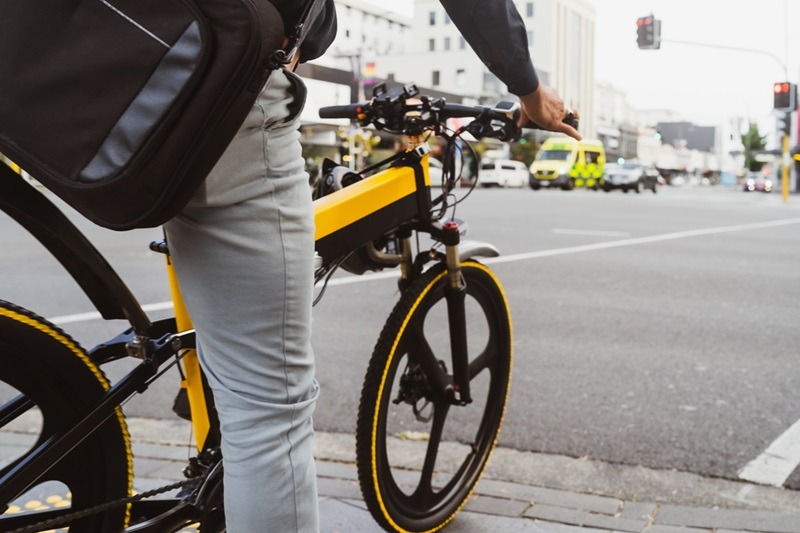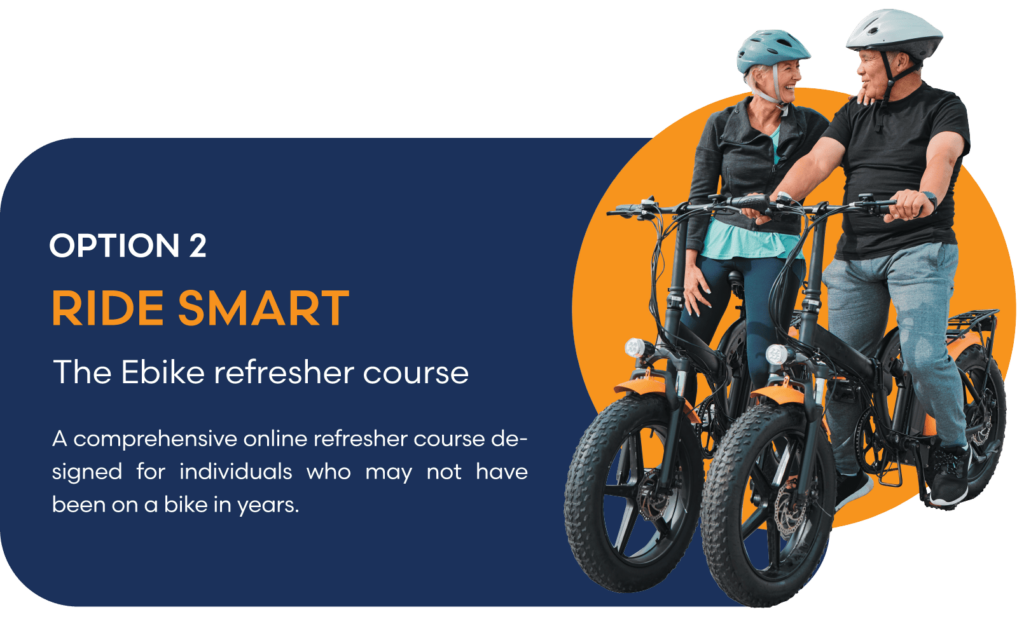eBikes, or electric bicycles, have surged in popularity due to their convenience, eco-friendliness, and the added boost for commuting and recreation. However, with this rise comes a critical question for potential riders: Do you need a license to ride an eBike?
In general, whether you need a license for an eBike depends on its specific classification and local regulations. A license is not required for most low-power eBikes, but as the power and speed increase, some regions do require one.

This article will explore the various factors determining whether a license is required for eBike usage, including eBike classifications, regional laws, and the specific attributes of the eBike being used.
Ebike Usage Over the last four years
As eBikes continue to grow in popularity worldwide, recent statistics reveal trends in sales, licensing, and regulation that reflect the evolving landscape of this innovative mode of transportation.
Global Growth in eBike Sales:
eBike sales have surged globally, with the market seeing a significant increase. For instance, in the U.S., eBike sales grew by 145% from 2019 to 2020 alone, outpacing the Growth of traditional bicycles during the same period. This rise in popularity has led to more discussions around licensing and regulations as governments try to keep up with the evolving market.
Licensing Trends in Europe:
In Europe, where eBikes are more integrated into daily transportation, certain countries like Germany have seen a steady increase in the license requirement as eBike classifications, like S-Pedelecs, become more common. By 2021, Germany reported that nearly 1 in 5 eBikes sold were S-Pedelecs, which typically require a moped license.
U.S. State Regulations:
As of 2023, over 30 U.S. states have adopted specific eBike classification laws that do not require licenses for Class 1 and 2 eBikes. However, many states are considering or have already implemented licensing requirements for higher-speed Class 3 eBikes, particularly in urban areas with higher traffic densities.
Urban Adoption and Safety Concerns:
A 2022 study by the National Association of City Transportation Officials (NACTO) found that as eBike adoption increases in urban areas, cities are grappling with how to regulate them. This has led to pilot programs in cities like New York and San Francisco, where licensing requirements for certain types of eBikes are being tested to improve safety and manage traffic flow.
Insurance and Licensing Correlation:
In regions like Canada and parts of Europe, there has been a 30% increase in insurance policies for eBikes since 2020, mainly for high-powered models. This rise correlates with introducing stricter licensing requirements, as insurance companies and regulators work to mitigate risks associated with faster, more powerful eBikes.
Understanding eBike Classifications
To determine whether you need a license for an e-bike, it’s crucial to first understand how e-bikes are classified. Different classes of e-bikes have varying power levels and speed capabilities, which directly influence legal requirements.
Definition of eBikes:
An e-bike is a bicycle equipped with an electric motor to assist with pedaling. Unlike traditional bicycles, e-bikes offer motorized assistance, making them a hybrid between a bicycle and a motorized vehicle. The assistance typically cuts off at certain speeds, depending on the e-bike’s class.
Types of eBikes:
Class 1 eBikes: These are equipped with a motor that only provides assistance when the rider is pedaling, and the assistance cuts off at 20 mph. No license is typically required for this class.
Class 2 eBikes: These motor can propel the bike without pedaling (throttle mode) but also cut off at 20 mph. Licensing requirements vary, but a license is not required in many regions.
Class 3 eBikes: These offer up to 28 mph pedal assistance but do not include a throttle mode. Due to the higher speed, some regions may require a license.
Power and Speed Regulations:
The power output of an eBike’s motor (measured in watts) and its top speed are critical factors in determining whether a license is required. For instance, in the U.S., eBikes with motors under 750 watts typically don’t require a license, but exceeding this power threshold may change the legal requirements.
Licensing Requirements by Region
Licensing laws for eBikes vary significantly depending on where you live. This section will explore the different regulations across the United States, Europe, and other regions, highlighting the specific requirements that may apply to your eBike.
United States:
Federal Regulations: According to the Consumer Product Safety Commission (CPSC), eBikes with a maximum motor output of 750 watts and a top speed of 20 mph are classified as bicycles, meaning no federal license is required. However, this doesn’t preclude state-specific regulations.
State Variations:
California: No license is required for Class 1 and 2 eBikes. However, for Class 3 eBikes, riders must be at least 16 years old, and while no license is required, helmets are mandatory.
New York: Recent laws align closely with California, allowing Class 1 and 2 eBikes without a license, while Class 3 eBikes have age restrictions.
Texas: Texas law does not require a license for any eBike class, but local municipalities may have their own rules.
Europe:
E.U. Regulations: The European Union has established that eBikes with a motor output of up to 250 watts and assistance up to 25 km/h (15.5 mph) do not require a license. However, this regulation allows member states to enforce stricter local laws.
Country-Specific Laws:
Germany: Riders of eBikes that exceed 25 km/h need a license. S-Pedelecs (eBikes that assist up to 45 km/h) require a moped license.
U.K.: No license is required for eBikes that meet the E.U.’s 250-watt and 25 km/h criteria, but helmets are recommended.
Netherlands: Like Germany, S-Pedelecs require a moped license, registration, and insurance.
Other Global Examples:
Canada: In most provinces, eBikes with a motor output of 500 watts or less and a top speed of 32 km/h (20 mph) do not require a license.
Australia: Licensing requirements vary by state. For example, in Queensland, no license is required for eBikes with a motor of up to 200 watts, but a motorcycle license may be necessary for higher-powered models.
Asia: Regulations are diverse, with some countries like Japan requiring a license for eBikes that exceed specific power or speed thresholds.
Factors Influencing the Need for a License
Several factors, including the power, speed, and environment in which you ride, can affect whether a license is required for your eBike. This section breaks down these key factors to help you understand how they impact licensing.
eBike Power and Speed:
The higher the power (in watts) and the faster the speed, the more likely an eBike will require a license. For example, an eBike with a 500-watt motor that can reach speeds of 28 mph is more likely to be classified in a category requiring a license than a 250-watt model that caps at 20 mph. Higher speeds and power can make an e-bike behave more like a motor vehicle than a bicycle.
Local Infrastructure and Enforcement:
Like dedicated bike lanes, regions with developed cycling infrastructure might have more lenient licensing requirements. However, urban areas with heavy traffic may impose stricter rules to ensure rider safety. Active law enforcement and local regulations also play a significant role; in areas with stringent traffic laws, the chances of needing a license increase.
Riding Environments:
Urban environments with dense traffic and mixed-use paths may require stricter regulations to protect eBike riders and pedestrians. Conversely, rural areas might have more relaxed laws, reflecting the lower risk of accidents and collisions.
Registration and Insurance Requirements
Some regions may also require registration and insurance for certain types of eBikes in addition to licensing. This section will cover what you need to know about these additional requirements and how they relate to licensing.
Registration:
While not all regions require eBikes to be registered, this can vary based on the eBike’s classification and local laws. For instance, in some parts of Europe, S-Pedelecs must be registered like mopeds, which also influences the need for a license.
Insurance:
In countries like Germany, insurance is mandatory for certain high-speed eBikes (S-Pedelecs), and failure to comply can lead to fines. In the U.S., insurance is generally not required for lower-class eBikes, but it’s advisable to check local laws. Insurance is a good practice to cover potential liabilities even where not needed.
Helmet and Safety Gear:
While not directly related to licensing, the requirement to wear helmets and other safety gear can indicate the region’s stance on eBike regulations. For example, Class 3 eBike riders in California must wear helmets, reflecting a more stringent regulatory environment.
Penalties for Riding Without a License
Failing to comply with licensing laws can result in fines and other legal consequences. This section details the potential penalties for riding an eBike without the necessary license, ensuring you understand the risks involved.
Potential Fines:
Riding an eBike without a required license can lead to significant fines. For instance, in the U.K., riding an S-Pedelec without the appropriate moped license can result in fines of up to £1,000. In the U.S., fines vary by state but can range from $50 to several hundred dollars, depending on the severity of the infraction.
Legal Consequences:
Beyond fines, riding without a license where one is required can have more severe legal implications. In some jurisdictions, it could lead to misdemeanor charges, especially if the rider is involved in an accident. Additionally, being caught repeatedly without a license might result in suspending other driving privileges or even criminal charges, depending on the local laws.
How to Obtain a License if Required
If a license is required for your eBike, this section provides a step-by-step guide on obtaining it. From the application process to training and costs, we cover everything you need to know.
Application Process:
If required, obtaining an eBike license typically involves visiting a local Department of Motor Vehicles (DMV) or equivalent authority, submitting necessary documents (proof of identity, residency, etc.), and paying a fee. The specific requirements can vary; for instance, obtaining a moped license for an S-Pedelec in Germany involves both a written test and a practical exam.
Training and Exams:
Some regions may require passing a basic road safety course or a specific training program to obtain a license. This might include theoretical knowledge (e.g., understanding road signs and eBike regulations) and practical skills (e.g., safe riding techniques).
Costs Involved:
The cost of obtaining a license can vary widely. In the U.S., the fee for a moped license might range from $20 to $50, depending on the state. In Europe, costs might be higher, mainly if training courses are mandatory. For example, in Germany, the cost of obtaining a moped license can exceed €100, including training and examination fees.
10 Practical Tips for eBike Riders
Whether or not a license is required, riding an eBike comes with responsibilities. This section offers practical tips to help you stay informed, ride safely, and connect with the eBike community.
Staying Informed:
It’s crucial for eBike riders to stay updated on the latest regulations in their area, as laws can change. This can be done by regularly checking government websites, joining local eBike communities, or subscribing to updates from cycling advocacy groups.
Responsible Riding:
Whether a license is required, responsible riding is key to safety. This includes obeying traffic laws, wearing appropriate safety gear, and maintaining the eBike in good condition. Riders should also be mindful of their surroundings, particularly in shared spaces like bike lanes or mixed-use paths.
Battery Management:
Properly managing your eBike’s battery can extend its lifespan and ensure you don’t run out of power mid-ride. Always charge your battery according to the manufacturer’s guidelines, avoid letting it drain completely, and store it in a cool, dry place when not in use.
Regular Maintenance Checks:
Regular maintenance is crucial for keeping your eBike in top condition like any vehicle. Perform routine checks on the tires, brakes, chain, and motor to ensure everything functions properly. Scheduling periodic professional tune-ups can also help prevent issues before they arise.
Plan Your Route:
Planning your route can make your rides safer and more enjoyable. Look for bike-friendly paths, consider the terrain, and be aware of areas with heavy traffic or challenging conditions. Apps and maps designed for cyclists can be particularly useful for finding the best routes.
Visibility Matters:
Increasing your visibility on the road is crucial for safety, especially in low-light conditions. Equip your eBike with front and rear lights, wear bright or reflective clothing, and use hand signals to communicate your intentions to other road users.
Understand the Limits of Your eBike:
Every eBike has limitations in terms of range, speed, and power. Familiarize yourself with these limits to avoid pushing your eBike beyond its capabilities, which can lead to mechanical failures or unsafe situations. Knowing your eBike’s range can also help you plan charging stops on longer rides.
Respect Local Wildlife and Environment:
Be mindful of the local wildlife and environment when riding through parks or natural areas. Stick to designated paths, avoid disturbing animals, and carry out all trash. Being a respectful rider helps preserve these areas for everyone to enjoy.
Emergency Preparedness:
Always be prepared for the unexpected by carrying a basic repair kit, a first-aid kit, and a fully charged phone. Knowing how to perform simple repairs, like fixing a flat tire, can be invaluable in an emergency on the road.
Community Resources:
Many local communities offer resources such as eBike safety workshops, group rides, and forums where riders can exchange information about regulations, maintenance tips, and riding techniques. These can be invaluable.
Navigating the regulations around eBikes can be complex, but understanding the requirements for your specific model and location ensures you ride safely and legally. Whether a license is needed or not, responsible riding and staying informed are crucial to enjoying the many benefits of eBiking.
For more detailed information on eBike laws, maintenance tips, and the latest in eBike technology, visit EBIKEU, your go-to resource for everything eBike.


